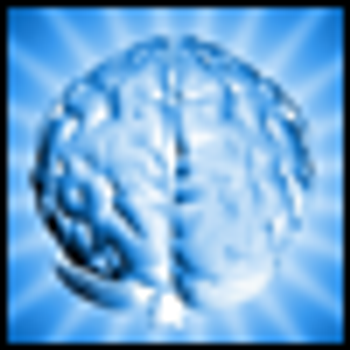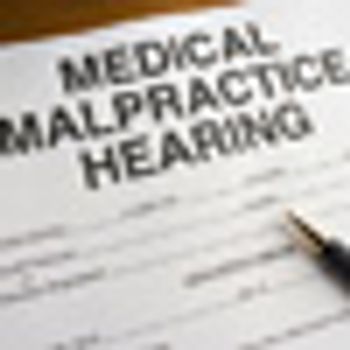
The bullying prevention program is very popular but not very effective because bullying is an inevitable part of life.

The bullying prevention program is very popular but not very effective because bullying is an inevitable part of life.

The psychiatric aftermath of critical illness can involve emerging from the ICU with horrifying memories (of being tortured, raped, assaulted, or imprisoned).

The demands on physicians keep growing-they are not only responsible for assessment, diagnosis, and treatment, they are subject to all manner of related administrative and practice responsibilities. Not surprisingly, physicians are susceptible to burnout.

It has become clear over the last couple of days that Sandy Hook Elementary School and Newtown have become an area of great concern locally, nationally, and internationally. We as a world community need to go through a grieving process that includes this type of sharing, especially for parents out there.

What we know for sure is that for all the young children and adults who were killed in Newtown, their world ended a week ago. Soon after the tragedy, one of the fathers of a child killed tearfully pleaded for society to learn from what happened in order to prevent future mass murders. Here, recommendations from a psychiatrist.

Few psychiatrists know about the phenomena involving delusional and hallucinatory experiences of patients who survive critical illnesses.

Very important-but generally neglected-aspects of the history of psychiatry provide something of a glimpse of what historians of mental health and illness are mulling over these days.

Patients with major depression or bipolar depression have a 20- to 26-fold increase of mortality rate over the general population. Suicidal behavior can be quite complex as well deadly. It should go without saying that psychotherapy is usually necessary in treating patients who have suicidal ideation or who have demonstrated such tendencies or actions. Frequently, it may be combined with medication and sometimes it is the treatment of choice without medication.

This article reviews the recent knowledge about glutamate in different psychiatric conditions based on research published in the past year.

While challenges in treating mania persist, the future discovery of novel therapeutic agents will likely expand our understanding of this devastating illness and provide key insights into future drug development.

The evolution of deep brain stimulation for various neuropsychiatric disorders results from advances in structural and functional brain imaging, increased understanding of neurocircuitry of the brain, and improvements in neurosurgical techniques and equipment.

I'm reviewing a left ventriculography from a man with chest pain, MI ruled out, his wife dead for a post-crash hour...

Therapy is a matter of cleaning the dust off so that you can see what's underneath.

So does penis size matter? What we can see is that the dimensions don't, but the feelings and fantasies do.

James Phelps, MD, Bipolar Disorder Section Editor for Psychiatric Times, is Director of the Mood Disorders Program at Samaritan Mental Health in Corvallis, Ore.Dr Phelps' essay, "Aufheben": A Dialectical Approach to Bipolar Diagnosis," begins an ongoing series on bipolar disorder focused on clinical utility. His Web site, PsychEducation.org, gathers no information on visitors and produces no income for him or others. He is the author of Why Am I Still Depressed? Recognizing and Managing the Ups and Downs of Bipolar II and Soft Bipolar Disorder (New York: McGraw-Hill; 2006), from which he receives royalties. Dr Phelps stopped accepting honoraria from pharmaceutical companies in 2008.

The DSM-5 will eliminate the bereavement exclusion in the diagnosis of major depressive disorder for 2 main reasons.

This article aims to provide the general psychiatric community with an update on the major findings on the biology of ASDs as well as the advances in diagnostic and interventional strategies.

• Federation of State Medical Boards. Model Policy Guidelines for the Appropriate Use of Social Media and Social Networking in Medical Practice.

Modern communication capacities have the potential to decrease or to increase stigma and the isolation of persons with serious mental illness. Psychiatrists especially need to know how to navigate these largely uncharted waters.

Computerized information resources are being introduced into psychiatric practice settings, but some psychiatrists question whether they are really needed.

While this article highlights some of the modern-era risks to confidentiality that psychiatrists may experience, it does not constitute an exhaustive list of issues to consider and is not a substitute for legal advice.

In psychiatry, professional challenges are heightened by the importance of the psychiatrist-patient relationship.

During a presentation at a past Psychiatric Times Virtual Career Expo, Dr Joseph Weiner answered questions submitted by attendees, offered here in this brief Q&A.

Psychosis can arise from a general medical condition, including endocrine diseases, metabolic diseases, autoimmune diseases, infections, narcolepsy, seizures, space-occupying lesions, strokes, head injury, and more.

The American Psychiatric Association Board of Trustees announced that it has approved the final diagnostic criteria for the DSM-5. According to the board, the APA has passed a “major milestone” on the way to its publication slated for May 2013.

The changes in the newly approved DSM-5 loosen diagnosis and threaten to turn our current diagnostic inflation into diagnostic hyperinflation.

In this time of Thanksgiving, the excerpt from “Thank Heaven for Little Girls,” most famously sung by Maurice Chevalier, conveys one of life’s blessings for fathers.

Social media is not a fad. It allows physicians to “get out of the office” in real time, to learn about patients’ concerns, and to connect with others.

The number of medical diseases that can present with psychotic symptoms (ie, delusions, hallucinations) is legion. A thorough differential diagnosis of possible medical and toxic causes of psychosis is necessary to avoid the mistaken attribution of psychosis to a psychiatric disorder.

Can patient care still be your greatest concern, given today’s litigious landscape? Does patient-focused care need to take a back seat against protecting yourself from malpractice?